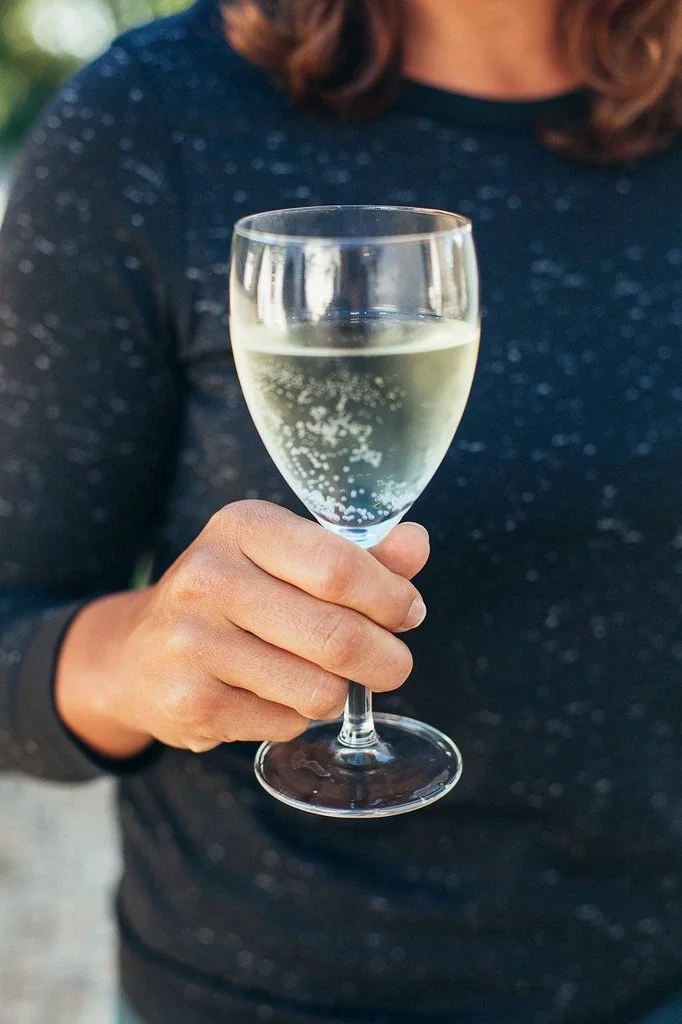Have you ever felt unsure about the proper way to hold a wine glass at a social gathering? Mastering the art of wine etiquette can enhance your dining experience and boost your confidence in formal settings. While it may seem trivial, how you grasp your glass can impact both the wine's temperature and your overall appearance. In this guide, you'll discover the correct techniques for holding different types of wine glasses, understand why proper handling matters, and learn how to avoid common faux pas. By the end, you'll be equipped with the knowledge to navigate any wine-centric occasion with poise and sophistication.
How to Hold a Wine Glass Properly

Holding a wine glass properly is both an art and a science. The correct technique not only enhances your drinking experience but also preserves the wine's temperature and prevents unsightly fingerprints on the glass.
The most widely accepted method is to grasp the stem of the wine glass between your thumb and first two fingers. This technique allows you to swirl the wine easily, aerating it to release its aromas. It also keeps your hand's warmth from affecting the wine's temperature, which is especially crucial for white wines and champagne.
For stemless wine glasses, hold the glass at its base. While this may warm the wine slightly, it's preferable to gripping the bowl, which can leave smudges and alter the wine's temperature more rapidly.
Remember, never cup the bowl of a wine glass in your palm. This common mistake can significantly impact the wine's taste and appearance. By mastering these techniques, you'll not only look more sophisticated but also enjoy your wine as the winemaker intended.
Why Proper Wine Glass Holding Technique Matters
Proper wine glass holding technique is more than just etiquette; it significantly impacts your overall wine experience. Holding a wine glass correctly helps maintain the wine's ideal temperature, preserving its intended flavors and aromas. Your hands naturally emit heat, which can warm the wine if held incorrectly, potentially altering its taste profile.
Furthermore, the correct grip prevents unsightly fingerprints on the bowl, allowing for a clear visual appreciation of the wine's color and clarity. This is particularly important for sommeliers and wine enthusiasts who rely on visual cues to assess a wine's quality and characteristics.
Proper holding technique also enhances the wine's aroma. By gripping the stem, you avoid covering the bowl with your hand, which could interfere with the release of the wine's bouquet. This allows you to fully appreciate the complex scents that contribute to the overall tasting experience.
Lastly, mastering the art of holding a wine glass exudes confidence and sophistication, elevating your dining experience and impressing fellow wine enthusiasts.
Benefits of Holding Your Wine Glass Correctly
These are some of the benefits of Holding your wine glass correctly:
Enhanced Aroma Appreciation
Holding your wine glass correctly allows you to fully experience the wine's bouquet. By grasping the stem, you avoid warming the bowl with your hands, which can alter the wine's temperature and affect its aroma profile. This proper technique ensures that you can savor the wine's intended fragrance, enhancing your overall tasting experience.
Improved Temperature Control
Maintaining the ideal serving temperature is crucial for wine enjoyment. When you hold the glass by its stem, you prevent your body heat from warming the wine. This is especially important for white wines and champagnes, which are best served chilled. Proper handling helps preserve the wine's crisp, refreshing qualities.
Elegant Presentation
Holding your wine glass correctly exudes sophistication and knowledge of wine etiquette. It demonstrates respect for the wine and the occasion, making a positive impression at social gatherings or formal events. This refined gesture can elevate your dining experience and showcase your attention to detail.
Better Visual Assessment
Grasping the stem allows for easier swirling and tilting of the glass, which is essential for evaluating a wine's color and viscosity. This technique provides a clearer view of the wine's appearance, helping you appreciate its visual characteristics and assess its quality before tasting.
Preservation of Glass Clarity
By avoiding contact with the bowl, you prevent unsightly fingerprints and smudges on the glass. This not only maintains the glass's aesthetic appeal but also ensures that nothing interferes with your visual assessment of the wine. A clean, clear glass enhances the overall presentation and enjoyment of your wine.
Common Mistakes to Avoid When Holding a Wine Glass
These are some common mistakes to avoid when holding a wine glass:
Gripping the Bowl
One of the most frequent errors is holding the glass by its bowl. This can warm the wine and leave unsightly fingerprints. Always grasp the stem instead to maintain the wine's temperature and presentation.
Palm Cupping
Cupping the bowl with your palm is another faux pas. This method not only warms the wine but also appears clumsy. Opt for a more elegant grip on the stem.
Stem Strangling
While holding the stem is correct, gripping it too tightly can appear awkward and may risk breaking delicate glassware. A gentle, relaxed hold is ideal.
Top-Heavy Hold
Grasping the glass too high on the stem can make it top-heavy and prone to tipping. Find a balanced grip lower on the stem for stability.
Incorrect Finger Placement
Avoid wrapping all fingers around the stem. Instead, use your thumb and first two fingers for a refined look.
Swirling Mistakes
Overzealous swirling can lead to spills. Swirl gently on a flat surface until you've mastered the technique.
Improper Glass Angle
When sipping, tilt the glass at the correct angle to avoid spills and to properly appreciate the wine's aroma.
How Glass Shape Affects How to Hold It
The shape of a wine glass significantly influences how you should hold it. Different glass designs are crafted to enhance specific wine characteristics, and your grip can impact the wine's temperature and presentation.
Stemmed Glasses

For traditional stemmed glasses, always hold the glass by the stem. This technique prevents your hand's warmth from affecting the wine's temperature and avoids unsightly fingerprints on the bowl. Pinch the stem between your thumb and first two fingers, allowing your hand to rest comfortably.
Stemless Glasses

With stemless glasses, you'll need to hold the glass by its body. Cup the lower half of the glass in your palm, using your fingers to stabilize it. While this may warm the wine slightly, it's often acceptable for more casual settings or with certain red wines that benefit from a bit of warmth.
Flutes and Coupes

For champagne flutes, hold the stem as you would a standard wine glass.

With coupe glasses, support the wide base of the stem with your fingers for better balance.
Tips for Holding Wine Glasses Steadily
These are a few tips to hold your wine glass steadily:
Grip the stem, not the bowl
Always hold the wine glass by its stem to maintain the wine's temperature and prevent unsightly fingerprints. Pinch the stem between your thumb and first two fingers for optimal control.
Use your dominant hand
Employ your stronger hand for a steadier grip. This simple tip can significantly reduce the risk of spills or drops.
Keep your wrist straight
Maintain a straight wrist while holding the glass to minimize shaking. This posture provides better stability and control.
Rest the base on your palm
For added support, allow the base of the glass to rest gently on your palm. This technique distributes the weight more evenly.
Avoid overfilling
Pour wine to about one-third of the glass's capacity. A less-full glass is easier to manage and less likely to spill.
Practice proper posture
Stand or sit up straight with relaxed shoulders. Good posture contributes to steadier hands and more graceful movements.
Use both hands when necessary
For larger glasses or during extended periods, it's acceptable to use your other hand for additional support. Place it under the base of the glass for extra stability.
Frequently Asked Questions
These are some of the frequently asked questions and answers about how to hold a wine glass.
Does the type of wine glass matter?
Yes, the type of wine glass can significantly impact your tasting experience. Different shapes and sizes are designed to enhance the specific characteristics of various wines. For example, red wines often benefit from wider bowls that allow more air contact, while narrower glasses are ideal for preserving the delicate aromas of white wines.
Should I hold the wine glass by the stem or the bowl?
Always hold the wine glass by the stem. This practice prevents your body heat from warming the wine and keeps fingerprints off the bowl, allowing for a clear view of the wine's color and clarity. Holding the stem also adds an element of elegance to your wine-drinking experience.
How full should I fill a wine glass?
As a general rule, fill the glass about one-third full. This allows enough space for swirling the wine to release its aromas without risking spillage. The exact amount may vary slightly depending on the glass shape and wine type but aim for no more than 5 ounces per pour.
Conclusion
As you refine your wine glass-holding technique, remember that proper etiquette enhances both the aesthetic and sensory experience. By grasping the stem, you maintain the wine's temperature and avoid unsightly fingerprints. This attention to detail demonstrates your respect for the craftsmanship behind each vintage. Whether you're at a formal event or casual gathering, holding your glass correctly elevates the entire experience. With practice, it will become second nature. So, the next time you raise a glass, do so with confidence and grace. Your newfound knowledge will impress fellow wine enthusiasts and allow you to fully appreciate each sip. Cheers to mastering this essential skill in wine appreciation!

















Comments